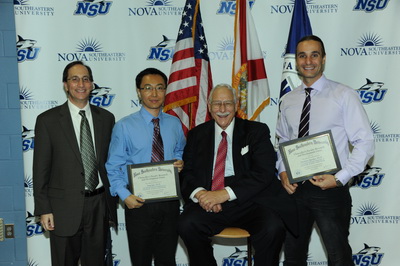Uncovering Chemical Components of Atmospheric Aerosols in South Florida
Grant Winners
- Song Gao, PhD – Farquhar College of Arts and Sciences
- Dimitrios Giarikos, PhD – Farquhar College of Arts and Sciences
- Crystal Stacy Ming – Farquhar College of Arts and Sciences
- Michael Wiernicki – Farquhar College of Arts and Sciences
Dean
- Don Rosenblum Ph.D. – Farquhar College of Arts and Sciences
Abstract

The central objective of this project is to better understand the chemical components of atmospheric aerosols in South Florida, as well as their sources and evolution pathways. The findings can make significant contributions to understanding several key issues in climate change, air quality, and public health. Aerosols pose the largest uncertainty in the assessment of Earth's climate; an intrinsic reason is the lack of knowledge on aerosols' chemical components, especially the organic species. Typically, 15% or less of organic aerosols has known molecular identities; the rest is unknown due to a lack of suitable analytical techniques. Aerosols can also cause air pollution, lowering visibility in cities and harming human health. Unique to South Florida, dust aerosols get transported here frequently in the summer, not only deteriorating air quality but also initiating the red tides in the coastal areas that are harmful to both humans and marine ecosystems. However, how organic and dust species may interact to affect climate and health is not understood. Field sampling coupled with instrumental analysis will be carried out to better characterize the chemical components of aerosols in South Florida. Samples will be collected in urban, suburban, coastal and marine sites, as well as in summer, winter and spring seasons. They will then be subjected to concurrent analyses by three analytical instruments in the lab. The goal is to identify and quantify new classes of organic compounds, such as epoxides, organic acids and salts, and oligomers. Also, size-fractionated mass distributions of organic and dust components will be obtained, and they will shed light on the sources and evolution pathways of these species. These scientific findings can help formulate better policies in climate change, air quality and public health.